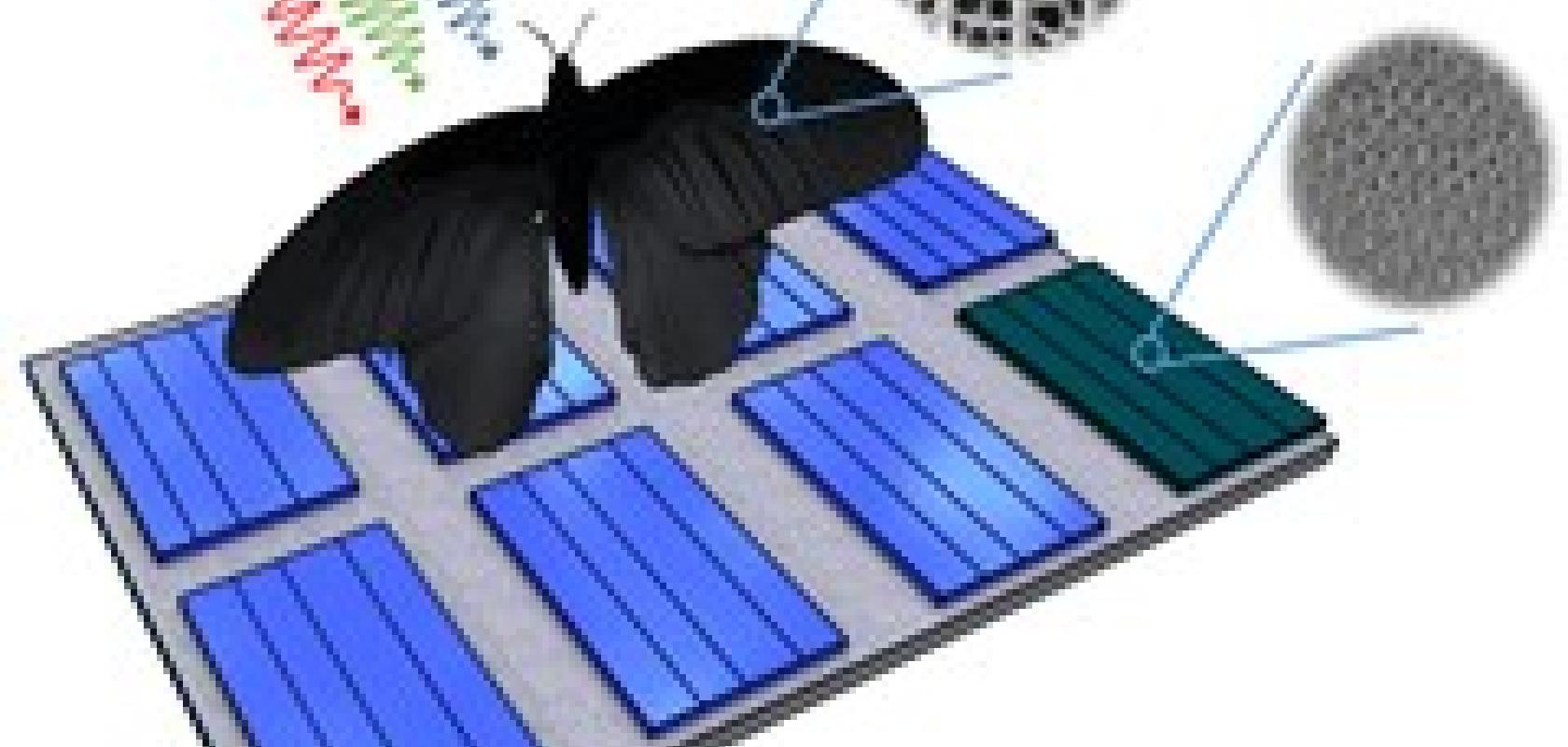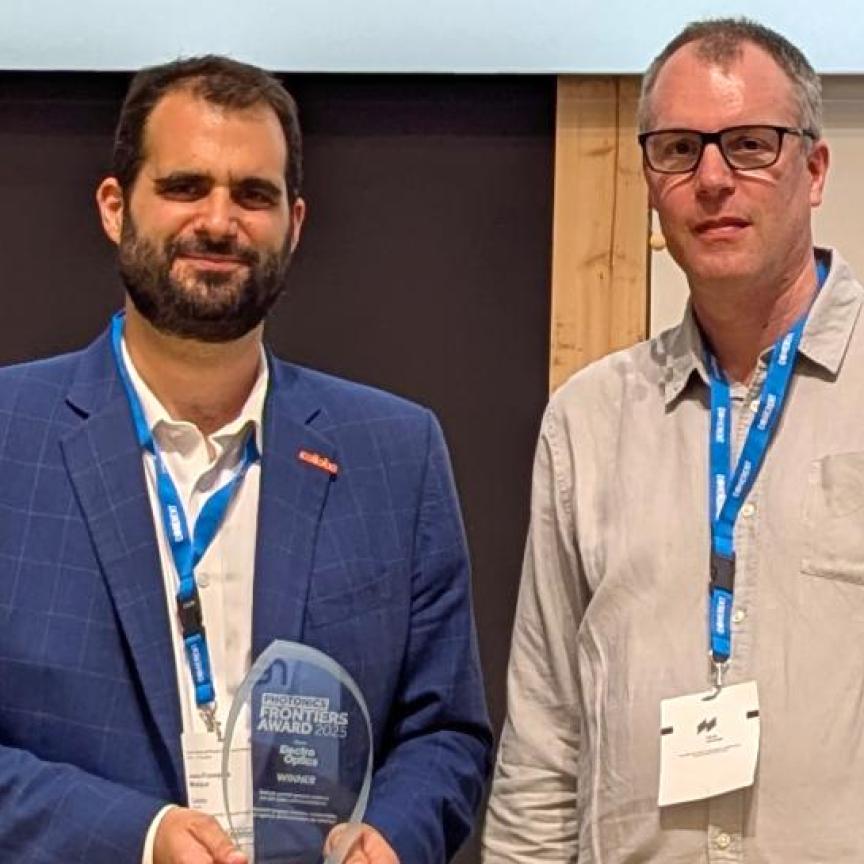Scientists from the Karlsruhe Institute of Technology (KIT) have taken inspiration from the nanostructures that optimise light harvesting on a black butterfly’s wing to improve the rate of light aborption in thin-film solar cells, potentially by as much as 200 per cent.
The wings of the black butterfly, or Pachliopta aristolochiae’, are covered by micro- and nanostructured scales that absorb sunlight over a wide spectral and angular range, hence their black appearance. In Science Advances, researchers from the Karlsruhe Institute of Technology (KIT) in Germany have described how these disordered structures absorb light far better than smooth surfaces, and how they can be introduced into thin-film photovoltaic absorbers to improve their functionality.
‘The butterfly studied by us is very dark black. This signifies that it perfectly absorbs sunlight for optimum heat management,’ said researcher Hendrik Hölscher. ‘Even more fascinating than its appearance are the mechanisms that help reach the high absorption.’
In exploring the nanohole structures in the butterfly’s wings, the KIT team used scanning electron microscopy to determine their diameter and arrangement, and then used computer simulations to analyse the rates of light absorption for their various patterns. It was found that disordered holes of varying diameters produced the most stable absorption rates over the complete spectrum at variable angles of incidence, compared to periodically arranged nanoholes of identical size.
Inspired by the phase separation mechanism of these biological nanostructures, the researchers introduced disordered nanoholes with diameters varying from 133nm to 343nm in thin-film photovoltaic absorbers in order to improve their efficiency. The absorbers were fabricated using a scalable, self-assembly patterning technique based on the phase separation of a binary polymer mixture.
The nanopatterned ‘bioinspired’ absorbers demonstrated a relative integrated absorption increase of 90 per cent at a normal incident angle of light, to as high as a 200 per cent increase at large incident angles, thus showing the potential of adapting black butterfly structures for light-harvesting purposes in thin-film solar cells. ‘The optimisation potential when transferring these structures to PV systems was found to be much higher than expected,’ confirmed Hölscher.
While the results were very promising, the researchers did point out that this does not automatically imply that the efficiency of complete PV systems is enhanced by the same factor. ‘Other components also play a role,’ said Guillaume Gomard, another of the researchers. ‘Hence, the 200 per cent is to be considered a theoretical limit for efficiency enhancement.’
Nevertheless, by combining bioinspired nanostructures with thin-film PV absorbers, the KIT researchers were able to improve the functionality of the absorbers by a factor of two. Their work could therefore provide a pathway for further systematic study of bioinspired nanostructures for the optimal design and function of PV devices.
The nanostructures were reproduced in the silicon absorbing layer of a thin-film solar cell, with the researchers themselves using hydrogenated amorphous silicon. They do believe, however, that any type of thin-film PV technology could be improved with using bioinspired nanostructures, and done so on an industrial scale.


